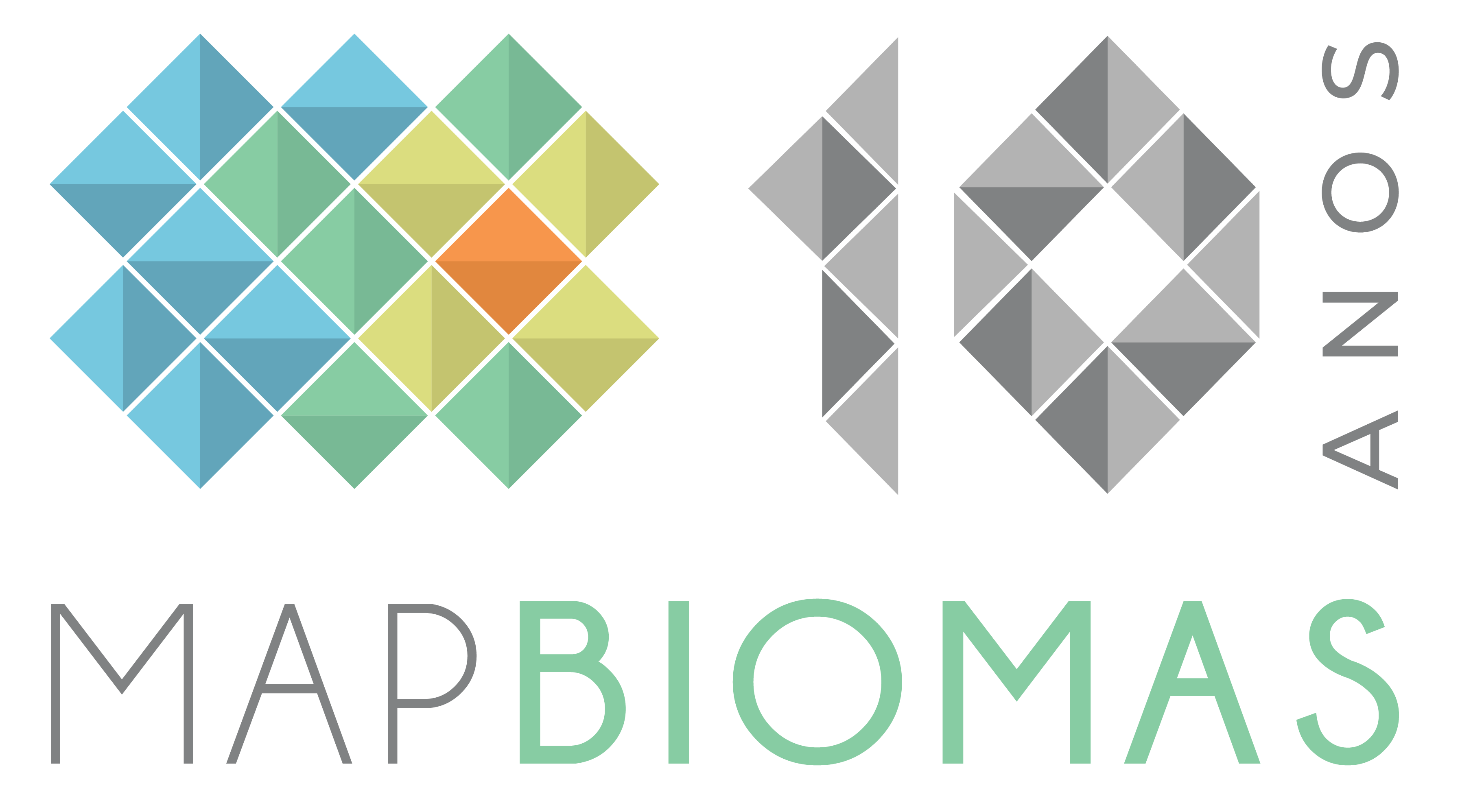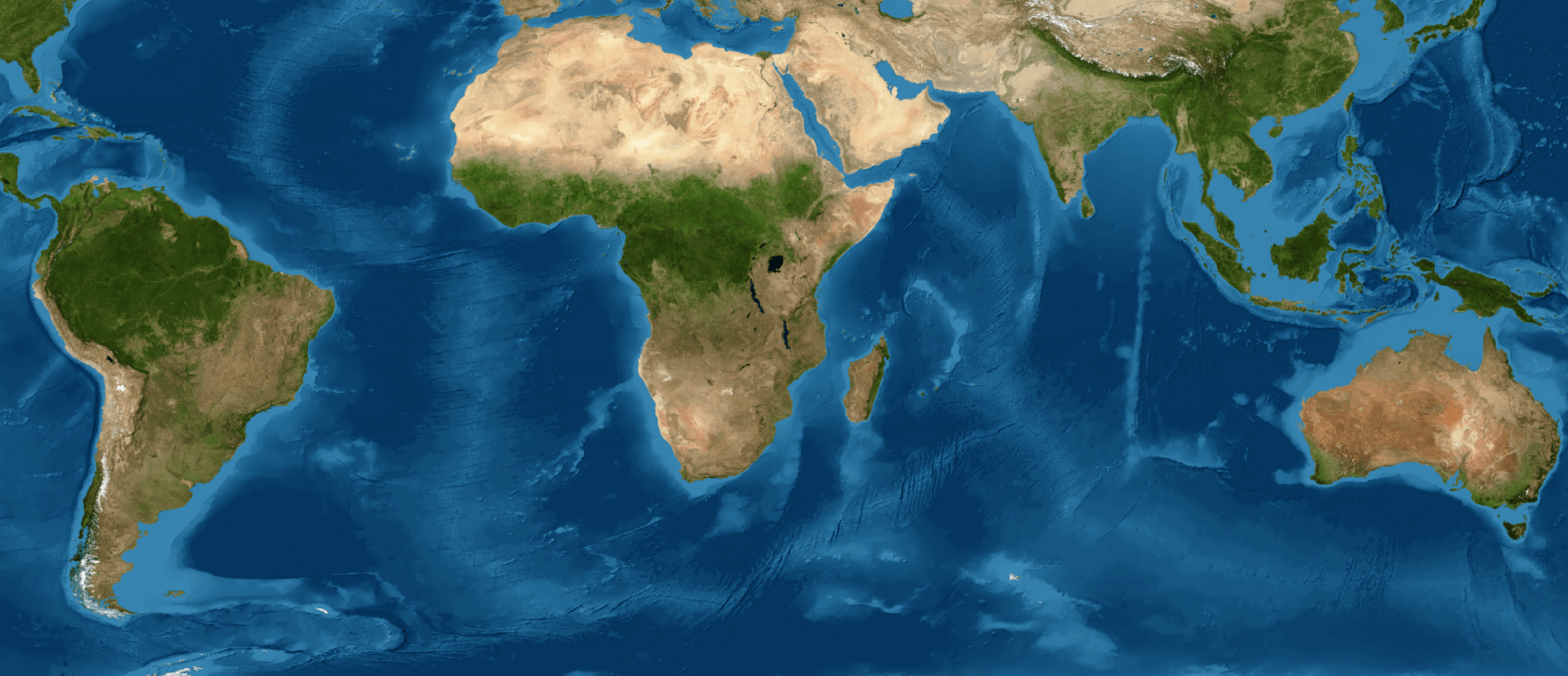August 13, 2025
A detailed analysis of land cover and use in Brazil over the last 40 years, from 1985 to 2024, reveals a scenario of profound transformations, with significant impacts on natural areas and the expansion of agriculture and livestock. During this period, Brazil lost an average of 2.9 million hectares of natural areas per year, totaling a reduction of 111.7 million hectares between 1985 and 2024. This area—equivalent to 13% of the national territory—is larger than Bolivia. Over the same period, the percentage of municipalities where agriculture and livestock occupy the largest share of the territory rose from 47% in 1985 to 59% in 2024.
This process, however, did not occur uniformly, as shown by the most recent Collection 10 of annual land cover and use maps from MapBiomas. Released on August 13 in Brasília, the new collection marks the 10th anniversary of this collaborative scientific production initiative. With 30 mapped classes, this year’s edition includes a new category: mapping of photovoltaic plants, which expanded across the country between 2015 and 2024, with 62% of the mapped area concentrated in the Caatinga. All data is already freely available at https://brasil.mapbiomas.org/
“Until 1985 — over nearly five centuries of agricultural frontier expansion cycles — Brazil converted 60% of all the area now occupied by agriculture, mining, cities, infrastructure, and other anthropic areas. The remaining 40% of that conversion occurred in just four decades, from 1985 to 2024,” summarizes Tasso Azevedo, General Coordinator of MapBiomas.
“The peak of this transformation was between 1995 and 2004, when deforestation reached its highest levels. But between 2005 and 2014, the smallest net loss of forests since 1985 was recorded. This trend reversed in the last decade, marked by degradation, climate impacts, and agricultural expansion,” emphasizes Julia Shimbo, Scientific Coordinator of MapBiomas and researcher at IPAM.
1985–1994 – Decade of Deforestation Expansion
At the start of the MapBiomas historical series, in 1985, 80% of Brazil’s territory was covered by natural areas. However, from then until 1994, anthropic areas increased by 36.5 million hectares, driven mainly by the expansion of pasture. During this decade, 30% of municipalities recorded their largest growth in urbanized area.
1995–2004 – Decade of Agricultural Expansion
The total forest loss was surpassed in the following decade, between 1995 and 2004, when the conversion of forest to agriculture and livestock reached 44.8 million hectares in the country. The expansion of pasture over native vegetation peaked during this period (35.6 million hectares). In the Amazon, the increase in anthropic areas reached 21.1 million hectares, consolidating the so-called “arc of deforestation” with the largest conversion of native vegetation to pasture in the biome.
2005–2014 – Decade of Reduced Deforestation and Agricultural Intensification
By 1995, natural areas covered 76% of Brazil’s territory; by 2005, that figure had dropped to 72%. Between 2005 and 2014, the country saw the smallest increase in anthropic areas over the 40-year period (+17.6 million hectares).
The net loss of native vegetation was 17.1 million hectares — the lowest among the four decades. Of this, 15.4 million hectares were forest, including Forest Formation, Savanna Formation, Flooded Forest, Mangroves, and Restinga Arbórea. This decade recorded the lowest conversion of forest formations into anthropic areas in the Amazon (7.7 million hectares). In the Cerrado, however, the MATOPIBA region concentrated 80% of deforestation for agriculture within the biome.
During this period, Brazil also experienced its largest expansion of temporary crops (+12.5 million hectares). At the same time, more than 20.9 million hectares of native vegetation were converted to pasture. On the other hand, this was the decade in which the total pasture area in the country stopped growing.
“In this decade, the creation of new pasture areas on recently deforested natural lands decreased, while the conversion of already established pastures to agricultural use or the regeneration of natural areas increased,” adds Laerte Ferreira, coordinator of pasture mapping at MapBiomas and head of LAPIG at the Federal University of Goiás.
Forestry also saw its largest expansion between 2005 and 2014, with an increase of 2.5 million hectares compared to the previous decade. However, 71% of this conversion to forestry occurred on already altered (anthropic) areas, unlike the 1985–1994 decade, when 71% of the conversion to forestry took place on native vegetation.
2015 to 2024 – Decade of increasing degradation and climate impacts
In the decade between 2015 and 2024, mining expanded significantly, with 58% of its current area emerging during this period, concentrated mainly in the Amazon (66%). It was also in these ten years that the Pampa recorded the highest rate of grassland loss (-1.3 million hectares), to the point where agricultural areas came to surpass native grasslands used for livestock. By 2024, agricultural land totaled 7.9 million hectares, while grasslands occupied 5.8 million hectares.
In this same decade, there was a slowdown in agricultural expansion across all biomes, especially in the Cerrado and the Atlantic Forest, where expansion was 2.7 million hectares and 3 million hectares smaller than in the previous decade, respectively. However, this was also when a new deforestation frontier emerged in the Amazon, in the states of Amazonas, Acre, and Rondônia — the Amacro region.
The flood cycles in the Pantanal have decreased with each passing decade, culminating in 2024 as the driest year of the past 40 years. The Amazon also faced severe droughts in this decade, with 8 of the 10 years of the smallest water surface in the historical series recorded in the last decade.
"Also in this decade, deforestation of secondary vegetation exceeded that of primary vegetation in the Atlantic Forest and the Pampa. On the other hand, it is worrying that precisely in these two biomes, which are the most anthropized, the losses of non-forest native vegetation have been the highest in the last decade," comments Eduardo Vélez, from the Pampa team.
Brazil reaches 2024 with 65% of its territory covered by native vegetation and 32% by agriculture. Secondary vegetation accounts for 6.1% of native vegetation in Brazil on average over the last decade, or 34.5 million hectares.
The numbers of the transition from natural formations to agriculture
Between 1985 and 2024, the Forest Formation was the native land cover type that lost the most area: a reduction of 62.8 million hectares (-15%), an area slightly larger than the territory of Ukraine. In second place is the Savannah Formation, which lost 37.4 million hectares (-25%) – an area larger than Germany.
Meanwhile, pasture and agriculture were the land uses that expanded the most. The area occupied by pasture grew by 62.7 million hectares (+68%), and agriculture by 44 million hectares (+236%). In 1985, 420 municipalities were predominantly agricultural; by 2024, that number jumped to 1,037. Although more numerous, municipalities with predominantly pasture did not expand at the same rate, rising from 1,592 in 1985 to 1,809 in 2024. Proportionally to the size of their territories, the states with the largest agricultural area are Paraná (34%), São Paulo (33%), and Rio Grande do Sul (30%). Forestry also experienced significant growth, increasing by 7.4 million hectares (+472%). In 2024, more than half of the country's forestry area is in the Atlantic Forest biome (50.6%), followed by the Cerrado (37%) and the Pampa (8%).
The period from 1985 to 2004 was marked by rates of pasture area gain exceeding the area loss, while subsequent periods showed stability in the total pasture area. A greater loss of pasture areas was observed in three of the five mapped biomes (Caatinga, Atlantic Forest, and Cerrado), with the Amazon leading the gain of new pasture areas, followed closely by the Pantanal.
On average, 67.5% of the gain in pasture area per decade occurred in forest and savanna areas. On the other hand, 25% of the areas that ceased to be pasture returned to forest or savanna.
A drier Brazil
MapBiomas maps several categories of wetlands in the biomes: Flooded Forest, Flooded Field, Marshland, Apicum, and Mangrove. Together, they occupied 84 million hectares, or almost 10% of the national territory in 1985; in 2024, they were 74 million hectares (8.8% of Brazil). All biomes have lost water surface area in the last 40 years, with the exception of the Atlantic Forest, due to the creation of reservoirs and hydroelectric dams that expanded the water surface area, mainly since the 2000s. The most drastic reductions were observed in the Pantanal, which in 2024 had a water surface area 73% below the average recorded between 1985 and 2024.
The dynamics of biomes
The Amazon lost 52.1 million hectares of natural areas in the 40 years between 1985 and 2024 (-13%), three out of every five hectares of agricultural land emerged in the last 20 years. The largest increase in anthropogenic area in this biome occurred between 1995 and 2004 (+21.1 million hectares), surpassing the total deforested up to 1985 (13 million hectares). A similar phenomenon was observed in the Pantanal, where the expansion of anthropogenic areas between 1985 and 1994 (540 thousand hectares) was similar to the total converted up to 1985 (570 thousand hectares). All the states with the highest proportion of native vegetation are in the Amazon: Amapá (96%), Amazonas (95%) and Roraima (94%).
In the Pantanal, between 1985 and 2024, there was a loss of 1.7 million hectares (-12%) of natural areas (native vegetation and water bodies converted to human use). The water surface extended over 24% of the biome in 1985, and in 2024, water covered only 3% of the biome, the result of an extreme drought, part of the process of decreasing floods and increasing dry periods in the biome.
In the Cerrado, 40.5 million hectares of native vegetation were cleared between 1985 and 2024 (-28%). In the Caatinga, this reduction was 9.2 million hectares (-15%). In the Atlantic Forest, it was 4.4 million hectares (-11%). All states with the lowest proportion of natural vegetation are located entirely or partially in the Atlantic Forest: São Paulo (22%), Alagoas (22%), and Sergipe (23%). In the Caatinga, Cerrado, and Atlantic Forest, most of the anthropogenic expansion occurred before 1985.
"The Atlantic Forest's forest cover has been practically stable over the last two decades, but while we observe an increase in secondary forests regenerating, deforestation of mature forests, which are richer in biodiversity and carbon stocks, persists," says Marcos Rosa, technical coordinator of MapBiomas.
The Pampa was the biome with the greatest proportional loss of native vegetation in the last 40 years (-30%, equivalent to 3.8 million hectares). These losses intensified in the last decade (2015 to 2024), when 1.3 million hectares of grassland formations were eliminated.
One-third of Brazil's photovoltaic plants are located in Minas Gerais
With Collection 10 of land cover and land use maps in Brazil, MapBiomas now also identifies the area occupied by photovoltaic plants in the country. The data show that growth began in 2016, with 822 hectares of land occupied by medium- to large-scale facilities dedicated to generating electricity through direct conversion of sunlight, with a focus on energy commercialization. By 2024, this area had reached 35,300 hectares. Almost two-thirds (62%, or 21,800 hectares) are in the Caatinga; about one-third (32%, or 11,200 hectares) are in the Cerrado; and 6% (2,100 hectares) are in the Atlantic Forest. Together, Minas Gerais, Bahia, Piauí, and Rio Grande do Norte will have 74% of the mapped area with photovoltaic plants in 2024: 25,900 hectares. Of this total, 13,100 hectares, or 37% of the total area occupied by photovoltaic plants in Brazil, are in Minas Gerais. Almost half (44.5%, or 15,700 hectares) of the area converted to photovoltaic plants was savannah formations, and 36.6% (12,900 hectares) of the area converted to photovoltaic plants was pastureland.
Acesse o documento de destaques da Coleção 10 em https://brasil.mapbiomas.org/destaques/

